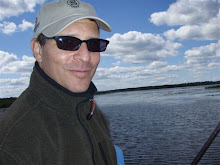The Taxi Cab as Economic Indicator
I have some pretty unscientific economic indicators that I watch to judge the state of our local economy. These would include the ability to get a cab in midtown Manhattan on a rainy day during rush-hour, whether my doorman gives me stock tips in the morning or how crowded the public tennis courts are in Central Park (the more crowded, the lousier the economy -- people give up their country club memberships). The article “Can You Hack it?” discusses what the history of the New York City taxi drivers says about the US economy.
Snow Removal: how the city can do it for free!
Shoveling snow is great aerobic exercise. The next time there is a major snowstorm, the city should require local health clubs to offer the hottest new exercise class -- the snow shovel aerobic workout!
Persistent Unemployment
Despite a pickup in the economy, unemployment continues to be a stubborn problem. I've always felt that unemployment issues are not just a function of the direct cost of hiring but also the myriad of rules and regulations with which employers must contend including fair labor laws, minimum wage requirements, OSHA requirements, etc., etc., etc., all of which add significantly to the cost of employment.My idea: during a severe economic downturn permit companies to hire unemployed workers and exempt the companies from complying with many of these rules and regulations with respect to these employees for a specified number of years. This would encourage employment by removing many of the obstacles and barriers that discourage employers from hiring.
The Silver Lining
Serious structural reform usually only occurs during periods of crisis. Only then are people compelled by economic necessity to resolve serious problems. The Great Depression gave birth to the New Deal, New York's flirtation with bankruptcy in 1977 resulted in significant labor concessions from local unions. Now with New York State and the city confronting the worst economic downturn in a generation there is a terrific opportunity to fix many of the structural problems that have plagued the city and state for many years. Pension reform, ethics reform, budgetary and fiscal policy, last in/last out firing policies etc. are all issues that have now been brought to the forefront and have a reasonable chance of resolution. Andrew Cuomo (much to my pleasant surprise) appears to be very much aware of the opportunity he has to effectuate this change. Hopefully he will have the willpower and strength to continue the fight until these changes are brought about. To see how other governors are taking advantage of the current economic downturn to effectuate serious structural reform, take a look at this New York Times article.
Efficiency
There is hardly a hard-fought political campaign that doesn't go by without one or more major candidates pledging to make government function more efficiently by eliminating government waste and needless spending. Yet, once the smoke clears and the election results are determined, these campaign promises often become empty pledges. What I find particularly alarming is that in all the discussions we are now hearing about budget deficits, nobody has really talked about how to make government function more efficiently as a way of reducing our deficits. They either discuss layoffs and service reduction or increasing taxes. It is time for politicians to act less like the politicians that they are and to behave more like the seasoned managers we need and take a hard look at how government functions and figure out how to eliminate much of the waste. The recent experiences of our airlines and auto companies are good examples of two industries that, through disciplined belt-tightening, have been able to rise from the dead. Our governments need to take a chapter from their books and weed out the gross inefficiencies in our systems.
The Greatest Year Ever
So what was the greatest year in the history of the city? For me, it was 1976. Even though the city was in the depths of a terrible downturn, a new creative spirit was beginning to take hold in Soho and the Village. I was living down on the fifth floor of a walk up on Sullivan Street in SoHo at the time. I was working as a bus boy in a trendy SoHo restaurant. In my free time I visited the new art galleries that were opening up in the area, listening to the new punk bands that were premiering at Max's Kansas City and CBGB’s, and hanging out in Washington Square Park and watching the world unfold around me while drinking Miller Hi-life out of a brown paper bag. I didn't have a care in the world. For other takes on the greatest year ever take a look at the article "The Greatest New York Ever."
All You Little Piggies!
Feeling hungry? Check out "Where to Eat."




No comments:
Post a Comment